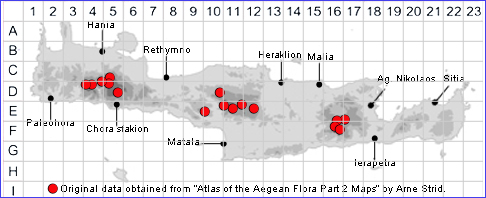
SPECIES DESCRIPTION
CIRSIUM MORINIFOLIUM
Family:- COMPOSITAE/Sect. ERIOLEPIS
Common Name:- None
Synonyms:- None
Meaning:- Cirsium (Gr) The ancient Greek name for thistle.
Morinifolium (L) With leaves resembling those of Morina.
General description:- Biennial.
Stem:-
1) 30-100cm. Much-branched, crispate pubescent.
Leaves:-
1) Glabrous or sparsely arachnoid-hairy beneath; lobes narrowly triangular to linear-
triangular, with stout apical spine 7-11(-15) mm.
Flowers:-
1) Capitula numerous, in a much-branched panicle or corymb, with 8-12 squarrose-
spiny subtending leaves 2-4 times as long as capitulum.
2) Involucre (15-)20-25 X 17-30 (-35) mm, sparsely arachnoid-hairy to -lanate, rarely
subglabrous.
3) Bracts patent, the middle ones gradually narrowed to the nearly smooth apex,
with apical spine 1-2 mm.
4) Corolla 20-26 mm, white.
Fruit:- Pappus 16-20 mm.
Key features:-
1) Capitula with 8-12 squarrose-spiny subtending leaves, 2-4 times as long as
capitulum.
2) Involucre (15-)20-30 x 15-30 mm; bracts erecto-patent to recurved, obviously
divided into a wide basal and a narrow apical part, middle bracts with apical
spine 1-2 mm.
3) Plant not more than 100 cm.
4) Mature pappus 15-20 mm.
5) Leaves strongly undulate.
Habitat:- Rocky and stony calcareous slopes in open dry shrubby vegetation and
especially in clayey dolines. 1000-2300 m.
Distribution:- Cretan endemic, confined to the three main massifs, not common.
Flowering time:- Mid-June to early Aug, occasionally later.
Photos by:- Steve Lenton
Status:-
Conservation status (for threatened species): Rare (R) according to IUCN 1997
Protection status (for threatened species): Greek Presidential Decree 67/1981
